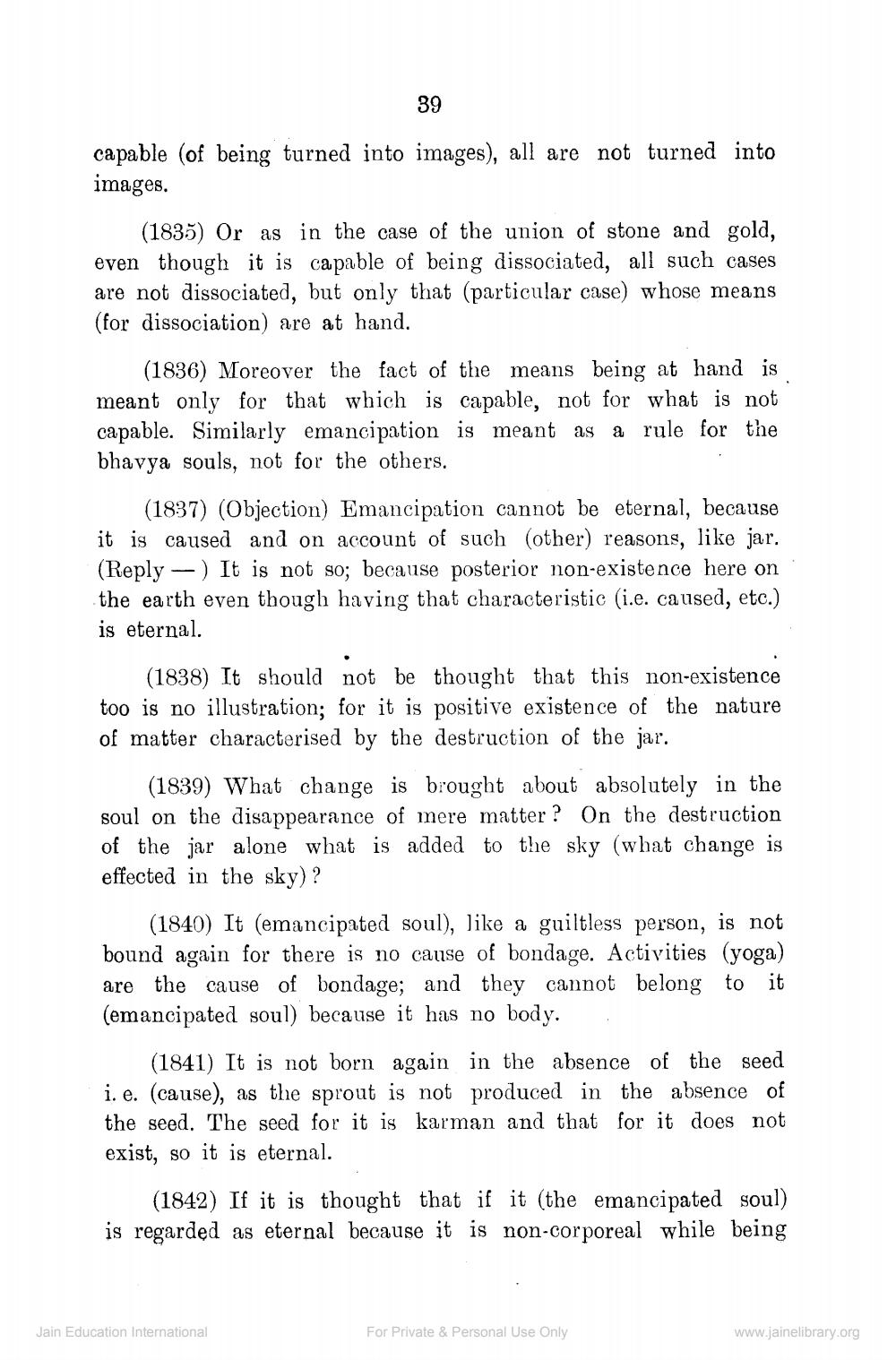________________
39
capable (of being turned into images), all are not turned into images.
(1835) Or as in the case of the union of stone and gold, even though it is capable of being dissociated, all such cases are not dissociated, but only that (particular case) whose means (for dissociation) are at hand.
(1836) Moreover the fact of the means being at hand is meant only for that which is capable, not for what is not capable. Similarly emancipation is meant as a rule for the bhavya souls, not for the others.
(1837) (Objection) Emancipation cannot be eternal, because it is caused and on account of such (other) reasons, like jar. (Reply — ) It is not so; because posterior non-existence here on the earth even though having that characteristic (i.e. caused, etc.) is eternal.
(1838) It should not be thought that this non-existence too is no illustration; for it is positive existence of the nature of matter characterised by the destruction of the jar.
(1839) What change is brought about absolutely in the soul on the disappearance of mere matter ? On the destruction of the jar alone what is added to the sky (what change is effected in the sky) ?
(1840) It (emancipated soul), Jike a guiltless person, is not bound again for there is no cause of bondage. Activities (yoga) are the cause of bondage; and they cannot belong to it (emancipated soul) because it has no body. .
(1841) It is not born again in the absence of the seed i. e. (cause), as the sprout is not produced in the absence of the seed. The seed for it is karman and that for it does not exist, so it is eternal.
(1842) If it is thought that if it (the emancipated soul) is regarded as eternal because it is non-corporeal while being
Jain Education International
For Private & Personal Use Only
www.jainelibrary.org




